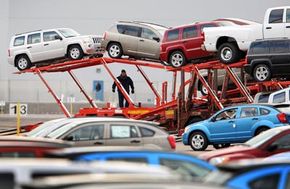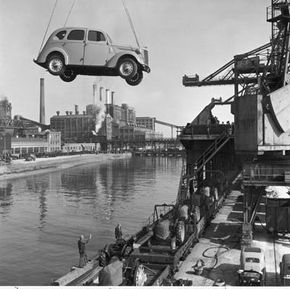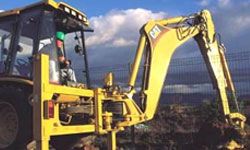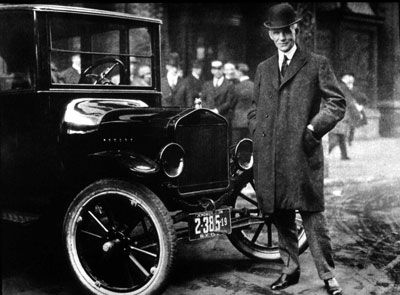Convenience and efficiency drive the automobile transport business. It's somewhat ironic that automobiles are transported since they themselves are designed and built to provide transportation. Millions of vehicles, however, must be carried by truck, railroad or large ship every year for a variety of reasons.
New cars can't be driven to their respective dealerships because consumers would consider them used vehicles. More than 16.1 million new vehicles were sold in 2007. Most of these vehicles were manufactured in one of 71 assembly plants located throughout North America, with the rest imported from Europe or Asia. Regardless of origin, all had to be transported to 14,285 new-car dealers the U.S [source: Automotive News 2008 Dealer Data].
Advertisement
Consider the organizational demands of Ford Motor Co. in North America. Ford has 13 full production plants that produce 2.5 million vehicles. These cars, trucks and SUVs must be delivered to 4,000 dealers. These are not random deliveries, like a load of paper towels dropped off at a supermarket: Dealers order specific vehicles from each production plant, and the correct vehicles must be properly routed through multiple channels for a timely and damage-free delivery [source: Lowe].
Automakers spend billions of dollars to transport new vehicles to their dealers, and much of this cost is passed on to consumers through the destination charge. This fee is posted on the window sticker or Monroney label found on all new vehicles. The manufacturer's actual cost to transport a specific vehicle from the assembly plant to the dealer is not reflected in the destination charge. Automakers instead use proprietary formulas to arrive at a nationwide average for a particular product type. That means large pickups will cost more than small compact cars but the charge for that product is the same whether the consumer buys the vehicle one mile or 2,000 miles away from the assembly plant. Destination charges are only for auto transport within the United States. With vehicle pricing so competitive, automakers strive to keep the destination charges down because they are included in the manufacturer's suggested retail price (MSRP).
Used cars are also transported throughout the country. In 2007, according to ADESA Analytical Services, almost 42 million used cars were sold in the United States. About one third were sold through franchise dealers, another third sold through 42,751 independent used-car dealers and the rest sold by private individuals. Used vehicles can make multiple trips on auto transporters as they are shipped to auctions or wholesale operations before going to a dealer [Source: Kontos].
Advertisement





